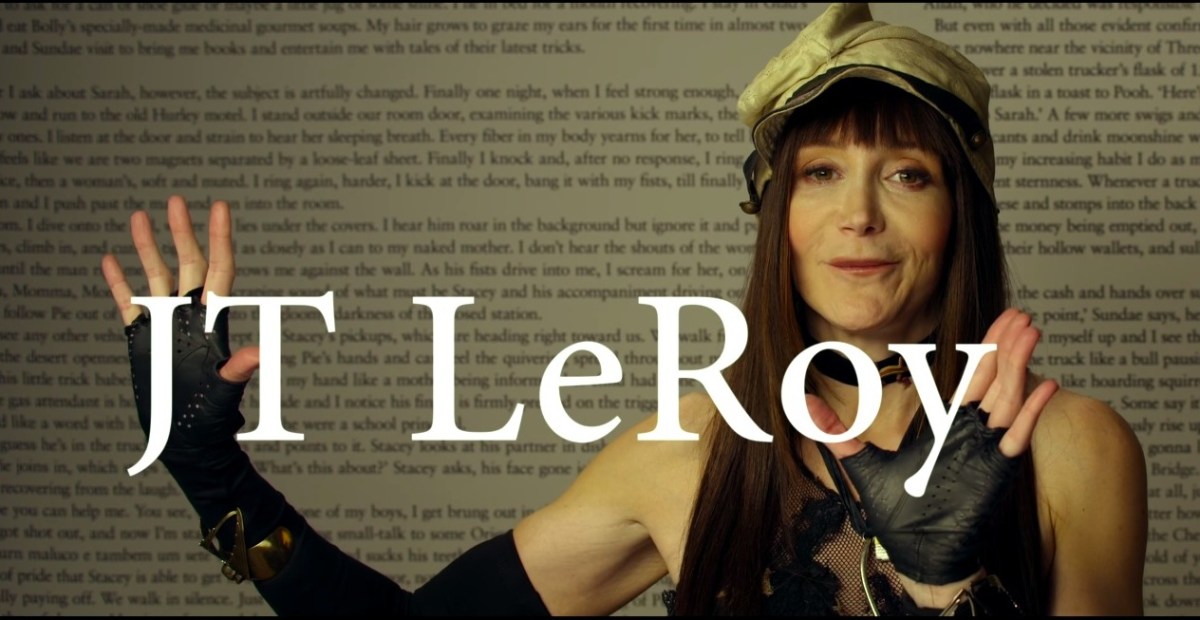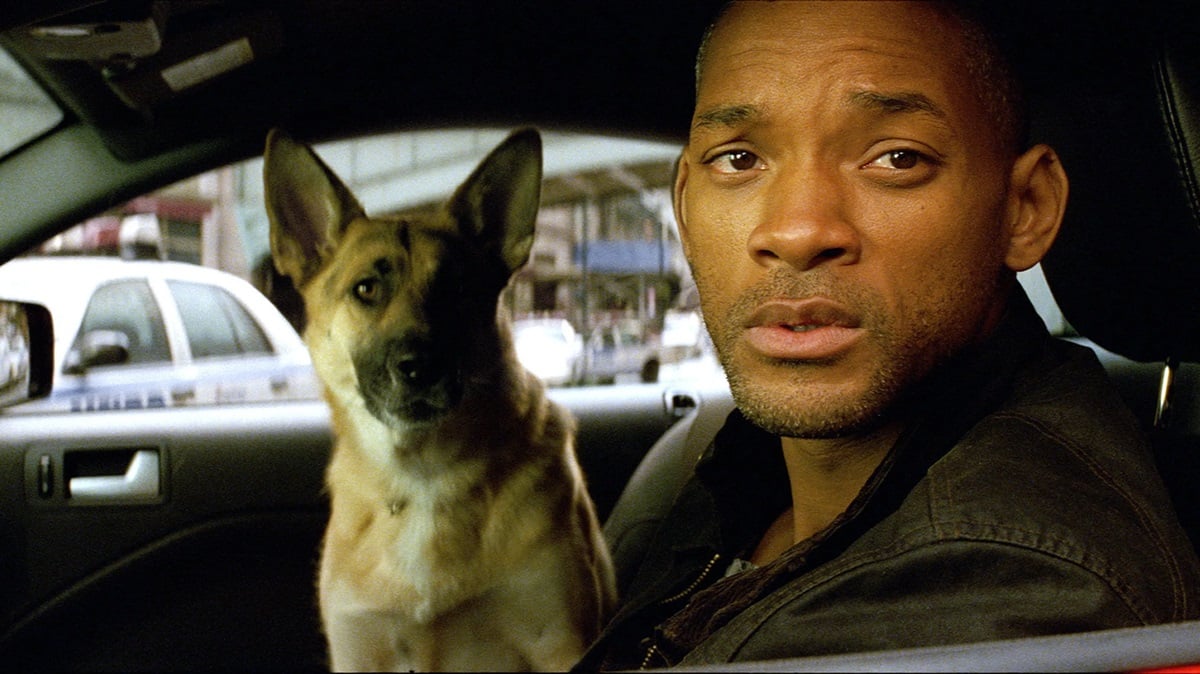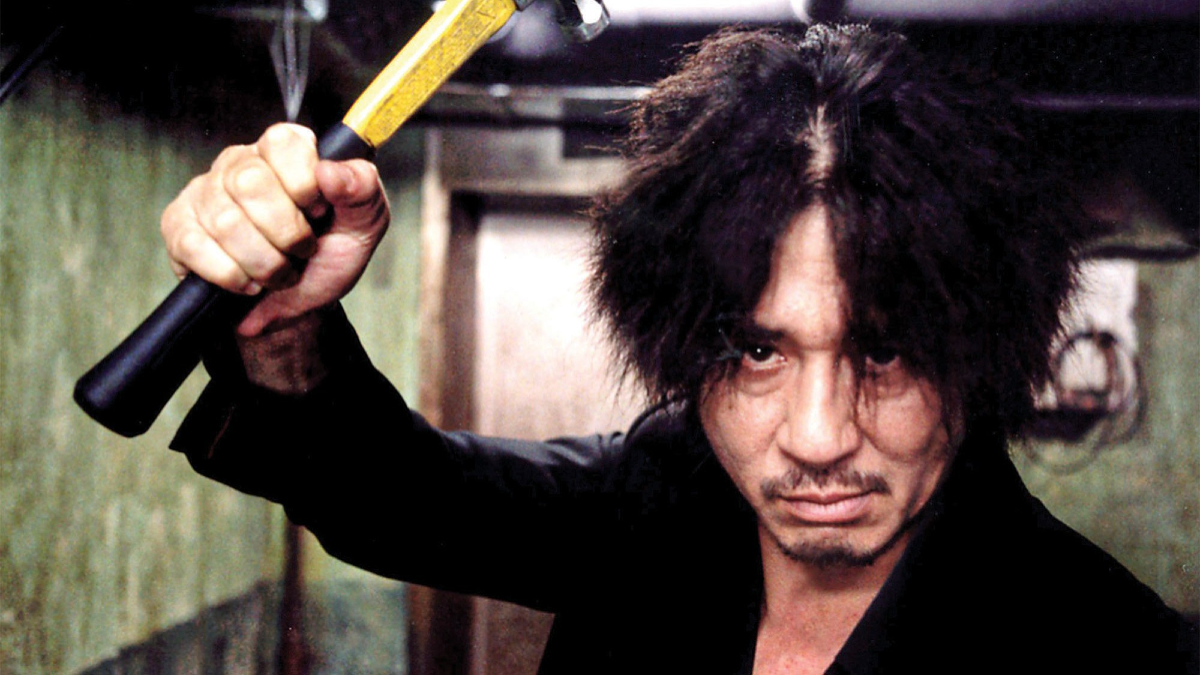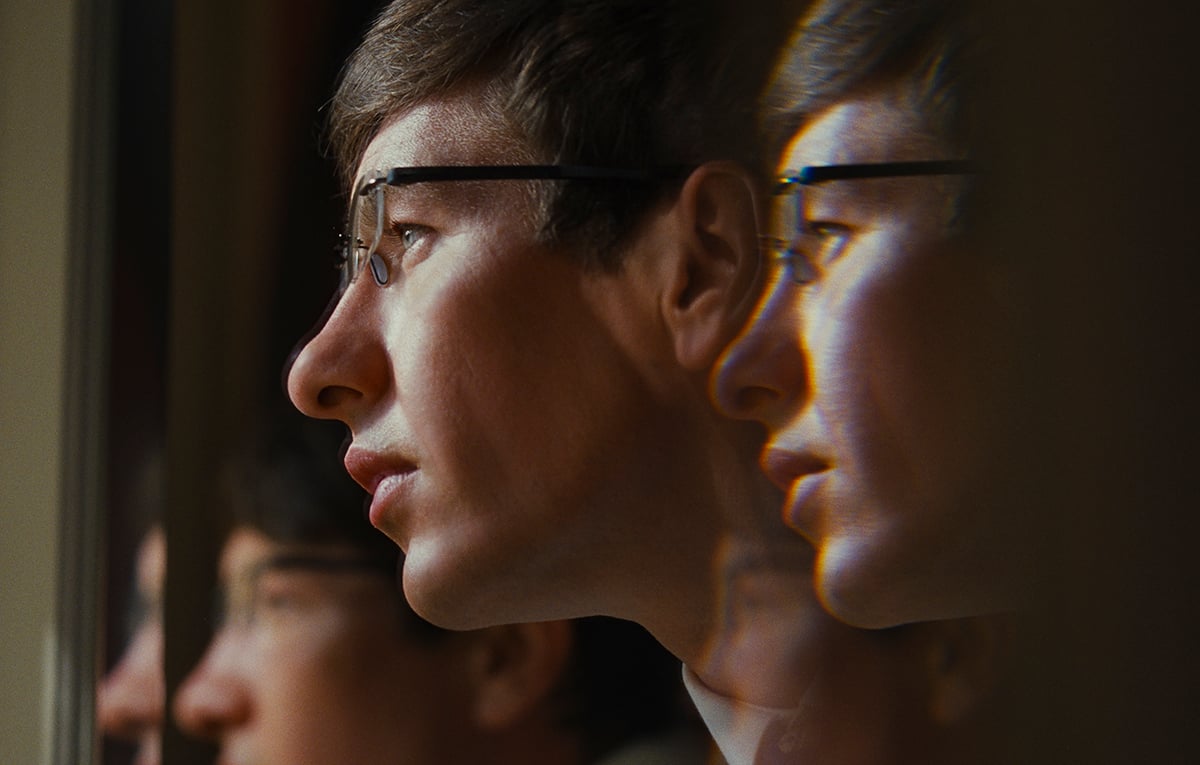I recently had an opportunity to watch Author: The JT LeRoy Story, a documentary about the literary persona that has been referred to as “the greatest literary hoax in a generation.” It’s a long story, one full of many twists and confusing turns, but the trailer above provides a pretty decent overview.
Preparing to interview director Jeff Feuerzeig and Laura Albert (the writer behind JT LeRoy) was challenging, because there’s just so much in this movie to unpack. Additionally, it was impossible to ignore much of the criticism Albert received for using this marginalized identity: the character of LeRoy is an underage prostitute who suffered sexual abuse, a junkie, and HIV-positive, though many of these characteristics were not always static in the saga.
At the same time, it’s hard not to feel empathy for Albert during this documentary, and it’s even more difficult not to be drawn in by the complexities of this story. It’s a movie that doesn’t linger on likability, nor does it shy away from the strangeness and messiness of Albert and LeRoy. Ultimately, Feuerzeig’s efforts to make the “truest” story he could, and Albert’s candidness, make it a compelling watch.
TMS (Charline): I was really curious about the balance of the film. I felt like the first part was about the creation and myth of “JT LeRoy,” and the second half was about how polarizing of a figure you became when it came out that JT LeRoy was not a “real” person. You kind of address that, at one point, when you say it’s okay for people from the gay community or otherwise to dislike you. I’m curious about how you feel about that now, and Jeff, how did you feel about mediating that conversation between critics of Laura and the film?
Jeff Feuerzeig: I’m going to answer that first. So I never really considered your question, ever. Nor did I think about it when making the film. I can only speak to what I attempted to do. So if that’s what you’re finding, that’s awesome. There are a lot of themes of the film. But that was not on my radar. What I was trying to do, very simply, was–it’s a non-fiction film, it’s a subjective journey largely told by Laura. I love the subjectivity that comes out of new journalism, my heroes are Tom Wolfe–The Man in the White Suit–Joan Didion, Norman Mailer. It’s a choice to go on journeys of subjectivity in search of a deeper truth, that’s what my film is all about.
I just wanted to tell a true story and tell it as best as I possibly can with millions of themes, including the two you mentioned, all wrapped up because it’s baked into the true story that needs to be told. The main goals that I was working with were A) the saga of JT LeRoy. Let’s call that the “A” story. The “A” story is massively complex with multiple characters. Laura playing herself, Jeremiah Terminator LeRoy, on a phone, Speedie the British handler, she’s inventing Astor and Thor.
TMS: She’s also Emily.
Feuerzeig: Emily Frasier, you’re right. That and all of that saga, filled with deceit and all the complexities and ramifications in the third act that I think you were addressing. This is all baked into the story, I just need to tell it. And that got told to the best of my abilities.
TMS: We also have the poetry itself.
Feuerzeig: The poetry, literature or fiction is a very important element. Those became animations. It was very important to have the audience experience this artist, just the writing in and of itself. I did my best within both of those books–one is a novel, one is a book of shorts stories. To pull meaningful thematic passages to animate and have told in the voice of JT LeRoy that, ultimately, were clues hidden in plain sight buried in the fiction that Laura had put there. The biggest clue of all in front of our face. The heart is Deceitful Above All Things.
When you see the animation of “I have a secret that I wanna tell, but I’m not ready yet. My eyes stayed down,” that’s a clue inside. A big one at the end of course is to quote Laura talking, “I knew I was writing the future.” And we cut and if you read Sarah the climax of the book is that the protagonist gets found out, and the townspeople, the lot-lizards at the diner and the prostitutes wanna “fucking kill” and burn the protagonist at the stake. She predicted she would ultimately be found out and ultimately be a pariah. That was in the fiction, and became an animation. That’s another level of the film.
The other really important thing I want to address is the backstory, the story of Laura Albert that is not the saga of JT LeRoy to learn her tragic backstory and find out “Who is this person?” and perhaps how and why the saga of JT LeRoy transpired or happened at all, because it was a mystery. So that I found multiple revelations that she had hot-line addiction as a very young girl, that sadly she was sexually abused as a very young girl, and had weight/body issues as well as this addiction. That she as a young girl, teenager, during her punk rock salvation had such sad and tragic body issues and lack of self-esteem that she had her sister appear as herself at punk-rock shows. She pretended to be British when she was in the group home and met Skinhead Mike. Finding all that, that’s the 2 “A” stories woven together, and what I was trying to do. I was aware of what you asked me, but I wasn’t thinking of it was a big thesis.
Laura Albert: And the thing, you know, the books were never marketed as “gay.” They were always in the fiction section. The other thing is that I have so many supporters from the community–they outweigh any detractors. Maybe initially, because no one really understood who or what I was. But the work has remained and has bobbled up even though it was first pushed up and Danny Nicoletta who created the Harvey Milk iconic stamp, that’s his image, he was a big JT fan and he’s one of my dearest supporters and he said, “You know, if you come with your heart and mind and thats what you’re connecting to, you understand the organic transition.” So the gay community is so varied and vast. Now we have words like gender fluidity, we’re not stuck in a binary. 10 years ago that wasn’t true.
TMS: Like, that language wasn’t as prevalent before. When I was reading about JT, I saw the term transgender a lot but from the film it seems like non-binary, genderqueer, or gender-fluid were more accurate terms.
Albert: That’s how I felt and I didn’t have that language. When i was 11 years old in ’76, transgender or lesbian were really shameful horrible, “something was wrong with you” things and I had no language for it and no way to express it. And, I just did it in this very secret, other way. Somebody asked me how I identify, and what’s beautiful is anyway I want. If I want to use a male pronoun or a they, and there are lots of small towns where they would not be down with that, but most college campuses, everyone would not bat an eye.
TMS: What do you think should be the biggest takeaway from this documentary, whether it’s from a fan of yours, someone who’s getting to know you for the first time, or a critic?
Albert: I would always encourage people to know there’s always more to a story. When you read something, always question and look a little deeper. If you look at the night sky and see stars, some people might see a zebra. Somebody else: “there’s a snail!” I’m the one who put the stars up there, and nobody asked me. I’m the one who has a roadmap to crazy, to connect them all, and he’s the only one who said “I want you to guide me. Tell me!” and then, “Why aren’t there other people talking?
You’ve had ten years of other people. It’s all public record, I went through a federal court trial, my court records where I was institutionalized, you can do the research. Because he knows that it was true, it was verified, but if anyone else has that question it’s there. Do your research! Journalists did not, they did not ask why and I would just–there’s that because sometimes we read something and we have this emotion. For instance, there was the felt authenticity of the work. People felt connected to it and they were published as fiction and then they were told they were lied to and people eventually came back to, “but I feel connected to this work so if she was making a ‘hoax'”–which is a purposeful word, meant to deceive.
TMS: It’s very loaded.
Albert: It is, and it’s more like an oyster creating a pearl. I didn’t have a choice, I was doing it before. It really was accidental, the way the movie shows it. To me, the gift of this process is I’m able to be there now with people because people come to the work and it speaks to them on all different levels. It explores so many issues that are really relevant right now: identity, gender, sexual abuse, trauma. I’m asking people to have compassion for who we normally would not have compassion for. That I’m able to be in my body and be present with people and share their experience. Being present with people, I couldn’t do that. I hid, it’s like the way a magician does a trick: you hide in the shadow, distract, so you can do the transformation in the dark. It’s like now I’ve come into the light.
TMS: Do you feel like you’ve transformed in a way since then?
Albert: I’ve kind of moved into my being. I still have Speedie and JT in me but it’s more of an integration. I have the book with my picture and name on them, and I fought hard not to have happen. That’s the thing, John Waters said to me: “The most un-American thing you can do is reject fame.” And I was rejecting it! I was like no! It’s funny because people said I did this to meet celebrities, but I was hiding. I was interested in artist-to-artist, meeting artists. That’s what you did in the punk-world. I was a journalist, and I interviewed Ian MacKaye, and I was interested in that. It’s like, I tell people, “If you have your story to tell, do it by any means necessary while holding someone’s heart.” It’s how you find craft to communicate what you need to, to break it down. People have such a wide range of experience and it’s a feeling of that work commodified and how do you break through that commodification to share a deeper truth that felt authentic that connects us. I think craft is the key.
TMS: I’m sure you both have heard about the upcoming fictional adaptation.
Feuerzeig: There’s someone trying to make one. I don’t know anything expect that they’re trying to make one. I don’t know anything about it.
TMS: How do you feel about having that story out there in addition to the documentary?
Feuerzeig: I have no comment on that whatsoever. I know all I care about is the film I made. Many people tell stories and they’re free to tell them. I wouldn’t even know how to answer that because it doesn’t exist.
TMS: That’s fair.
Feuerzeig: But this film does, and I’m proud to have made it.
Albert: You know, like Warhol said, to paraphrase, I think at the end of the day everyone will have their 15 minutes being JT LeRoy. People predicted it’ll be a big Halloween costume, it’s like the more the merrier.
TMS: Would you say your answer about the takeaway is similar to Laura’s?
Feuerzeig: I didn’t have an agenda for there to be a takeaway. It’s a subjective film that leaves it wide open for people to experience this story told by the author of the fiction, on and off the page, and to react any way they choose to react. And therefore, I don’t have an agenda in a takeaway. What I did find in my own personal journey is that the film raises fascinating questions about A) what is fiction? and perhaps where fiction comes from?
TMS: What I got was a sense–
Feuerzeig: Yeah, what’s your takeaway?
TMS: A conversation about art and its creator, how we perceive that and see public figures–and latch onto them. Also, the importance of story-telling in the sense that there are stories within stories. They overlap, and that messiness is worth diving into.
Feuerzeig: That’s a very valid takeaway. I found that I was saying this as I started making the film–once again I didn’t know the story yet–but from what little I knew I said this is absolutely the wildest story about stories I have ever heard. Therefore, I wanna try and tackle it. The other stuff you’re getting, I swear it’s like the first question you asked me, I’m not thinking about those things. They’re baked into the story. If you’re pulling that out, it’s lovely.
The JT LeRoy Story is being distributed by Amazon Studios and Magnolia Pictures, and opens September 9th.
Want more stories like this? Become a subscriber and support the site!
—The Mary Sue has a strict comment policy that forbids, but is not limited to, personal insults toward anyone, hate speech, and trolling.—
Follow The Mary Sue on Twitter, Facebook, Tumblr, Pinterest, & Google+.








